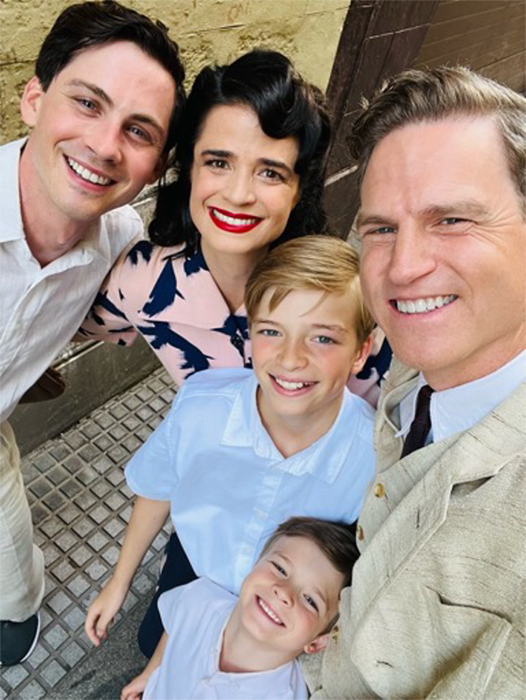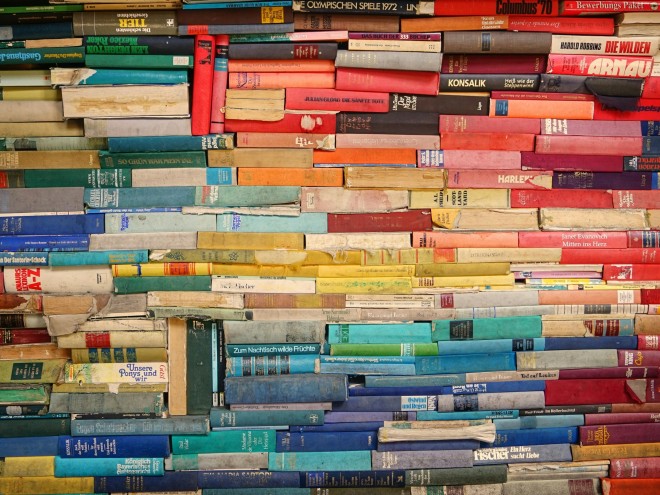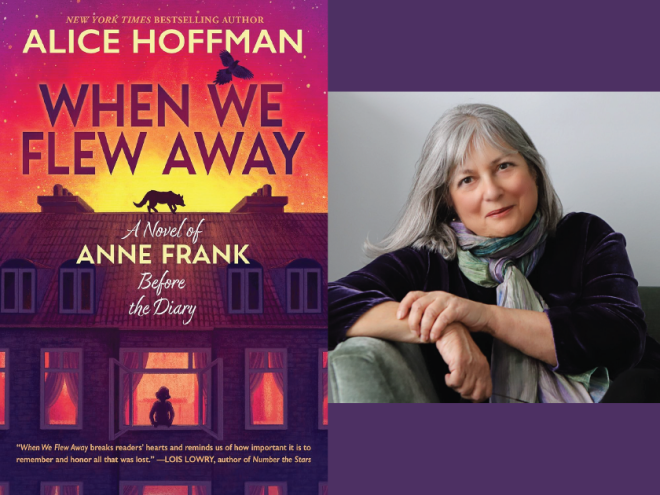
JBC spoke with Georgia Hunter about the recent adaptation of her bestselling novel, We Were the Lucky Ones, into a binge-worthy miniseries. Hunter shared the family history that inspired the novel, the extensive research she conducted while writing it, and the experience of returning to the book as she worked closely with the team bringing her family’s fictionalized story to the screen.
Simona Zaretsky: Georgia, a huge congratulations on the miniseries adaptation of We Were the Lucky Ones! It’s stunning. Could you speak a bit about the true story behind the novel?
Georgia Hunter: Thank you! It’s been mind-blowing to see the series come together. I love that it seems to be resonating with audiences the way we hoped it would.
Yes, the novel (the inspiration for the series) is based on the true story of my family’s Holocaust survival. Interestingly, despite the fact that I was quite close as a child with my grandfather Eddy (Addy in the book/series), he never spoke of being raised in the Jewish faith, or of his Holocaust-era roots. It was a chapter of his past that came to light a year after he died, thanks to a high school English assignment and an interview with my grandmother Caroline. The discovery sparked a lot of curiosity and left me with a lot of questions.
Some years later, at a family reunion, I stumbled into some answers when I found myself sitting around a table with my mother (Eddy’s middle child) and her first cousins, listening to stories unlike any I’d ever heard before about the war: a baby born in the Siberian gulag; a hike to safety over the Austrian Alps; an illegal wedding in Lvov; a mother-daughter escape from the ghetto; a disguised circumcision. I remember thinking, How am I just hearing these stories now? And also, Someone needs to write them down. I was twenty-one at the time and didn’t know then that someone would be me, but I think that’s when the idea was seeded.

The author with cousins at a Kurc family reunion, 2000
All photos courtesy of the author
Eight years later, I set off to try to unearth and record my family’s story. I flew around the world interviewing relatives, followed in the footsteps of the Kurc siblings on their paths to survival, and reached out to every archive and database I could think of in search of relevant records. Little by little, the Kurc family narrative — and the bones of We Were the Lucky Ones—came together.
SZ: What was the experience of being a debut author and the reception of We Were the Lucky Ones?
GH: We Were the Lucky Ones is such a personal story. The thought of publishing it, to be honest, was scary. I kept it close for a long time, before finally reaching out to literary agents. When the manuscript landed in the hands of my now friend and agent, Brettne Bloom, I knew it had found its home. She and I, along with my amazing editor at Viking, Sarah Stein, worked on polishing and revising until we all agreed the book was ready to go to print.
We Were the Lucky Ones was well received when it came out in 2017, but it really took off when it was released a year later in paperback and made the New York Times bestseller list. Being a first-time author, it was wild to know that my family’s story had found its way into the hands and hearts of so many readers.
SZ: What was it like to revisit the novel as it was transformed from a 2017 book to a miniseries?
GH: I loved coming back to the book and the family history in the adaptation process. I listened to old interviews I’d recorded, rewatched Shoah interviews, reread my notes, and dug up the records I’d uncovered. It felt great to be able to pass on all of these findings to the screenwriters and the production team, so they could refer to them as our scripts and sets came together.
SZ: What was your role in the adaptation? Were there any films or directors that influenced your approach to the miniseries?
GH: I got lucky in that Thomas Kail, who optioned my book and who’s one of the show’s directors and executive producers, is a close friend. I met him twenty-five years ago through my husband Robert — he and Tommy were pals in summer camp! When Tommy called to ask if we could partner to bring We Were the Lucky Ones to the screen it felt like a dream come true. Tommy encouraged me to be a part of the adaptation process, and so I was — every step of the way! I helped with the pitch, in the Writer’s Room, on set, and in post-production. All the people involved, from top to bottom — our amazing showrunner Erica Lipez, to the rest of our phenomenal creative and production teams — were incredibly invested from day one. They held the project so dearly in their hearts, just as I have in mine. The refrain, the thing I heard over and over again from start to finish was, “Thank you for bringing us this story. We’re honored and we’re going to do everything in our power to do it justice.”
There have been dozens of beautiful and important films and television series made about the Holocaust (and I hope there continue to be many more) but I can’t say we tried to emulate one piece or one approach in particular. Our mission was simple, in a way: to try to tell the Kurc family story as truthfully as possible, and to do so through a very real, very raw, human lens. We didn’t want the show to feel glossy or sepia toned or in any way dated. We wanted it to feel the opposite — vivid and relatable. At its core, We Were the Lucky Ones is a story about a family. The cast is the beating heart of the show and I think they did a phenomenal job of bringing our vision to life.

SZ: What was it like to adapt the novel into a miniseries? Have you heard any reactions from readers to the series yet?
GH: I’d spent so long imagining my family’s Holocaust experience that it was surreal, at first, to watch the story unfold on the screen. I traveled as often as I could to be on set for our shoot. We filmed the bulk of the series in Bucharest, Romania, and the last six weeks in Malaga, Spain. I’ll never forget walking onto the set of the Kurc family apartment with the cast for the first time. It felt like we were stepping back in time, as if my relatives were there with us. James Merifield, our set designer, was teary as he showed us around the space, pointing out the etched glass door to the dining room, the vintage China set, the framed photos of each of the siblings, the piano adorned in Chopin sheet music. I was teary, too, bowled over by the details, the authenticity of it all.
It was also surreal to meet the cast. To put faces and personalities to real-life relatives. We took our time in the casting process and I love that all of our actors are Jewish. A third are American, a third Israeli, and a third British. They’re the best of the best, and became a tight-knit family in the process of rehearsing and performing together.
So far, readers seem to be quite moved by the series. Many have reached out to tell me how beautiful, heart-rending, and timely it feels. My family has responded well to it, too! We had an early screening of our pilot at the US Holocaust Museum in Washington, DC, and twenty-eight relatives flew from all over the world to be a part of it. They were all blown away by the episode. One of my favorite comments was from a fellow third-generation cousin who told me, “I never had a chance to meet my grandfather [Adam]. Watching him on screen…it’s just how I imagined him.”

A scene from the miniseries recreated from a family photo, original photo visible on author’s phone
SZ: Was there anything that surprised you about translating the novel to a miniseries? (For example, were you able to include new scenes or research in this iteration of the story?)
GH: One of the things that struck me about the adaptation as I mentioned earlier was how beautifully the cast gelled as a family on set. I loved watching them perform, and even more so watching them between takes – the looks across the table, the bickering, the worry, the laughter, the love. It all felt so real and relatable.
I was also in constant awe of the detail and authenticity with which our production team was able to create the Kurcs’ physical world. Our props team made exact reproductions of the family artifacts I shared, including my grandfather Eddy’s snakeskin wallet, my great-grandmother Nechuma’s silver brooch, and my great-uncle Adam’s notebooks. When a family photograph surfaced just days before we were due to shoot my grandparents’ wedding scene, our costume designer, Lisa Duncan, pivoted from her original clothing choices and had replicas made of the dress and suit they wore on their actual wedding day. She also created replicas of the dresses my great-aunt Felicia wore as a child — dresses I’d discovered in a collection at Yad Vashem after the book was published. There are scenes in the series of our young Felicia (who goes by Barbara in the convent, the name stitched into her dress) wearing outfits identical to those Felicia wore in real life.
For the most part, the series plot stayed very close to that of the book, but we did include a few new scenes. For example, while the book starts in 1939 with my grandfather stranded in France and unable to return home for Passover, we decided to open the series with a seder in 1938, so audiences could get to know the family as a whole. We also chose to let my great-uncle Jakob experience the Radom ghetto liquidation. In reality he’d escaped the ghetto just days before. But we felt the experience offered a glimpse into what was happening to the majority of the Jews in Radom, and that reality was important to share.

Still image from We Were the Lucky Ones miniseries
SZ: What are you reading and writing now?
GH: I just finished a novel recommended by an Indie bookstore in Seattle called No Two Persons, by Erica Bauermeister. It follows one book as it falls into the hands of nine readers, each depicted in a different storyline, and, in very unique ways, changes each of their lives. Next I’m going to revisit Jumpa Lahiri’s The Namesake. I love Lahiri’s writing and I remember being inspired by how she so beautifully described the immigrant story — the struggle to honor one culture and fit in with another — when I first read it years ago. I’m excited to dip back in.

Georgia, age one, and her grandfather Eddy
On the writing front, I’m about to finish my second book! It’s a historical novel called One Good Thing and it tells the story of Italy’s complex and lesser-known Holocaust-era past through the eyes of a young woman forced to recognize, combat — and eventually overcome — her deepest fears. A harrowing but also a hopeful tale of friendship and loyalty. And an exploration of how, when the world closes in around us, we can find the courage and the strength to keep going.
Simona is the Jewish Book Council’s managing editor of digital content and marketing. She graduated from Sarah Lawrence College with a concentration in English and History and studied abroad in India and England. Prior to the JBC she worked at Oxford University Press. Her writing has been featured in Lilith, The Normal School, Digging through the Fat, and other publications. She holds an MFA in fiction from The New School.



